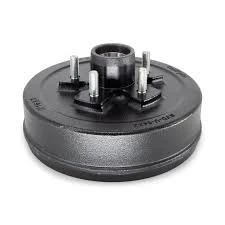
-
 Afrikaans
Afrikaans -
 Albanian
Albanian -
 Amharic
Amharic -
 Arabic
Arabic -
 Armenian
Armenian -
 Azerbaijani
Azerbaijani -
 Basque
Basque -
 Belarusian
Belarusian -
 Bengali
Bengali -
 Bosnian
Bosnian -
 Bulgarian
Bulgarian -
 Catalan
Catalan -
 Cebuano
Cebuano -
 Corsican
Corsican -
 Croatian
Croatian -
 Czech
Czech -
 Danish
Danish -
 Dutch
Dutch -
 English
English -
 Esperanto
Esperanto -
 Estonian
Estonian -
 Finnish
Finnish -
 French
French -
 Frisian
Frisian -
 Galician
Galician -
 Georgian
Georgian -
 German
German -
 Greek
Greek -
 Gujarati
Gujarati -
 Haitian Creole
Haitian Creole -
 hausa
hausa -
 hawaiian
hawaiian -
 Hebrew
Hebrew -
 Hindi
Hindi -
 Miao
Miao -
 Hungarian
Hungarian -
 Icelandic
Icelandic -
 igbo
igbo -
 Indonesian
Indonesian -
 irish
irish -
 Italian
Italian -
 Japanese
Japanese -
 Javanese
Javanese -
 Kannada
Kannada -
 kazakh
kazakh -
 Khmer
Khmer -
 Rwandese
Rwandese -
 Korean
Korean -
 Kurdish
Kurdish -
 Kyrgyz
Kyrgyz -
 Lao
Lao -
 Latin
Latin -
 Latvian
Latvian -
 Lithuanian
Lithuanian -
 Luxembourgish
Luxembourgish -
 Macedonian
Macedonian -
 Malgashi
Malgashi -
 Malay
Malay -
 Malayalam
Malayalam -
 Maltese
Maltese -
 Maori
Maori -
 Marathi
Marathi -
 Mongolian
Mongolian -
 Myanmar
Myanmar -
 Nepali
Nepali -
 Norwegian
Norwegian -
 Norwegian
Norwegian -
 Occitan
Occitan -
 Pashto
Pashto -
 Persian
Persian -
 Polish
Polish -
 Portuguese
Portuguese -
 Punjabi
Punjabi -
 Romanian
Romanian -
 Russian
Russian -
 Samoan
Samoan -
 Scottish Gaelic
Scottish Gaelic -
 Serbian
Serbian -
 Sesotho
Sesotho -
 Shona
Shona -
 Sindhi
Sindhi -
 Sinhala
Sinhala -
 Slovak
Slovak -
 Slovenian
Slovenian -
 Somali
Somali -
 Spanish
Spanish -
 Sundanese
Sundanese -
 Swahili
Swahili -
 Swedish
Swedish -
 Tagalog
Tagalog -
 Tajik
Tajik -
 Tamil
Tamil -
 Tatar
Tatar -
 Telugu
Telugu -
 Thai
Thai -
 Turkish
Turkish -
 Turkmen
Turkmen -
 Ukrainian
Ukrainian -
 Urdu
Urdu -
 Uighur
Uighur -
 Uzbek
Uzbek -
 Vietnamese
Vietnamese -
 Welsh
Welsh -
 Bantu
Bantu -
 Yiddish
Yiddish -
 Yoruba
Yoruba -
 Zulu
Zulu
drum brake disc brake comparison
Drum Brake vs. Disc Brake A Comprehensive Comparison
When it comes to automotive braking systems, drum brakes and disc brakes are two of the most common types used in vehicles. Each system has its own unique features, advantages, and disadvantages, making them suitable for different applications. Understanding the differences between drum brakes and disc brakes can help consumers make informed decisions regarding vehicle maintenance and performance.
Design and Function
Drum brakes consist of a hollow drum that rotates with the wheel and brake shoes that press against the inner surface of the drum when the brake pedal is engaged. This design provides a multi-point contact area that increases friction and slows down the vehicle. The main components include the drum, brake shoes, wheel cylinder, and return springs.
In contrast, disc brakes use a flat, circular disc (or rotor) that is mounted on the wheel hub. When the brake pedal is pressed, brake pads clamp down on the rotor to create friction, which slows the wheel and ultimately stops the car. The primary components include the rotor, brake pads, caliper, and hydraulic components.
Performance
Drum Brake vs
. Disc Brake A Comprehensive ComparisonConversely, drum brakes have an advantage in providing a larger surface area for friction, which can be beneficial for parking brakes and can typically perform better at lower speeds. However, they are more susceptible to water and debris, which can impair their braking power. As a result, drum brakes are often found on the rear wheels of economy cars and trucks, where they can efficiently handle lower-speed braking.
drum brake disc brake comparison

Maintenance and Cost
When it comes to maintenance, disc brakes are generally easier to service than drum brakes. The components of disc brakes are more accessible, which simplifies tasks such as pad replacement. Additionally, disc brakes tend to have a longer lifespan than drum brakes, which may offset their higher initial cost.
Drum brakes usually require more frequent adjustments and can be more labor-intensive to replace. The drum itself can sometimes become warped or worn, requiring more maintenance over time. While drum brakes are typically less expensive to manufacture, the need for regular upkeep can make them costlier in the long run.
Weight and Aesthetics
Weight is another important consideration. Disc brakes are usually lighter than their drum counterparts, which can contribute to better overall vehicle performance and fuel efficiency. However, this can vary based on the specific components used in each braking system.
In terms of aesthetics, disc brakes often look more modern and sporty than drum brakes, which may influence consumer choice, especially in performance and luxury vehicles. Many modern automobiles incorporate disc brakes on all four wheels to enhance both performance and appearance.
Conclusion
In summary, the choice between drum brakes and disc brakes largely depends on the specific needs of the vehicle and its intended use. Disc brakes offer superior performance and easier maintenance, making them the preferred option for many modern vehicles. On the other hand, drum brakes may still be appealing for their cost-effectiveness and suitable performance in specific applications. Ultimately, understanding these fundamental differences can guide consumers toward the best braking solution for their requirements.
-
What Are Drum BrakesNewsJul.07,2025
-
Understanding Brake Drum MaterialNewsJul.07,2025
-
Semi-Trailer Brake Drum: A Key Component for Extreme Loads and Long-Distance TransportNewsJul.07,2025
-
Drum Brake Pads for SaleNewsJul.07,2025
-
Brake Drums for SaleNewsJul.07,2025
-
Brake Drum ManufacturerNewsJul.07,2025
-
Aluminum Brake Drums: The Future of High-Performance CarsNewsJul.07,2025
